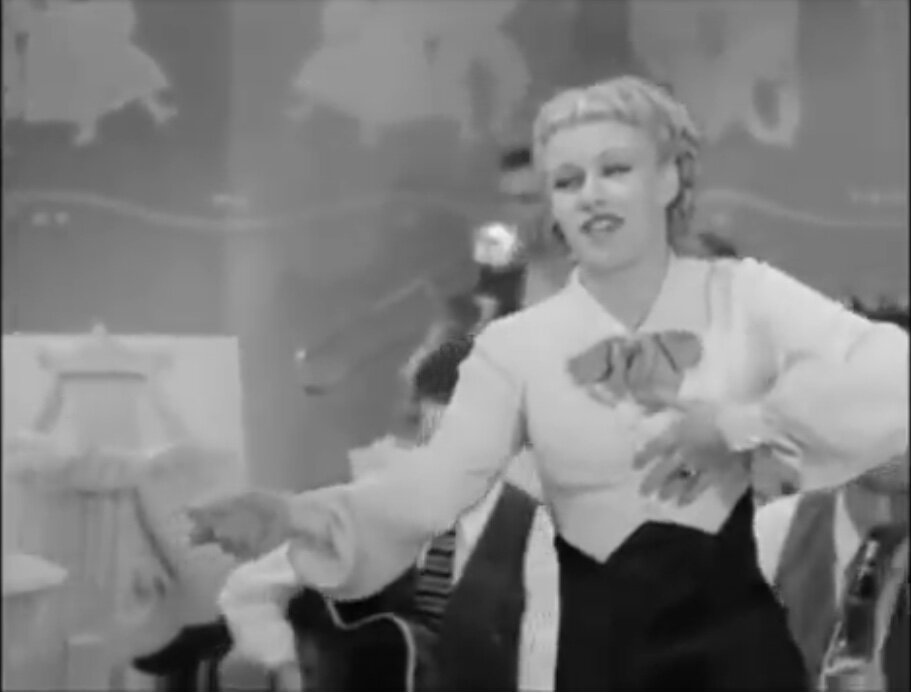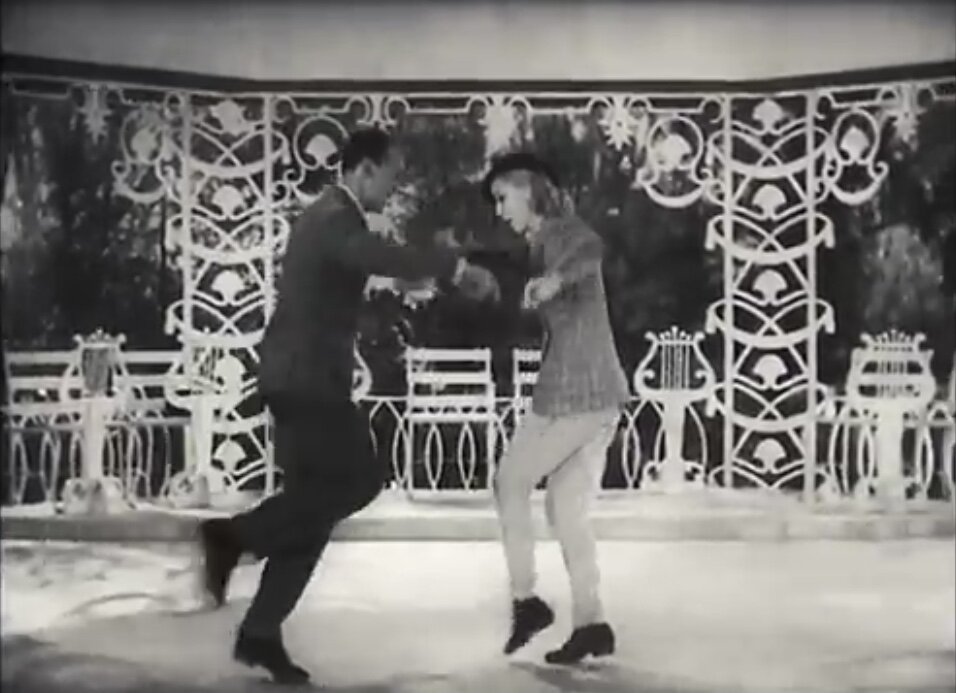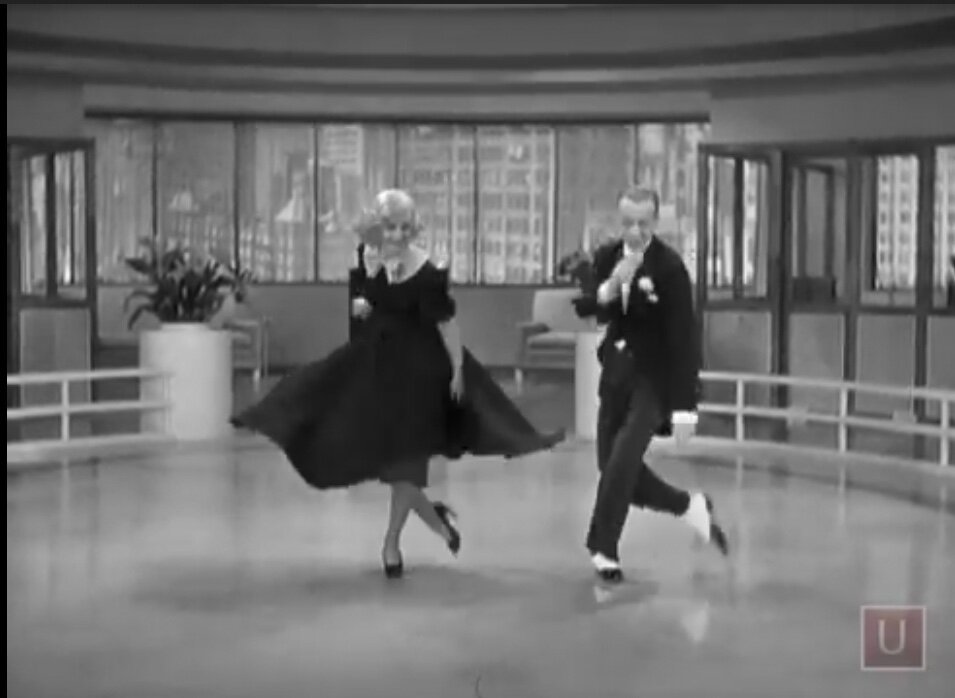Ginger Rogers, the woman who revealed how diverse a woman’s dancing persona can be in film: Women’s History Month in Dance, 2021
Women’s History Month in Dance 49, 50, 51, 52, 53, 54, 55, 56, 57, 58, 59. George Balanchine helped to create the myth that, in London in 1933, he had said he wanted to see the land that had girls like Ginger Rogers.
This is wise-after-the-fact talk. He may well have seen her in the movies by then, and he may well have seen her dancing in them, but the beauty of her long-legged physique and her beauty of her dancing did not become striking until after he had arrived in the U.S.A. (She’s terrific in the Busby Berkeley films “42nd Street” and “Gold Diggers of 1933”, which Balanchine very probably saw in Europe - but Busby Berkeley does not open her up as a dancer.) Her first film with Fred Astaire, “Flying Down to Rio”, was released on 29 December, 1933, a couple of days before Balanchine and Lincoln Kirstein opened the School of American Ballet.
Even then, it wasn’t till the third Astaire-Rogers movie, “Roberta” (1935), that Rogers showed herself the kind of dancer about whom Balanchine - and any of us - might lose sleep. There, she combines tap allegro (“I’ll Be Hard To Handle”) with romantic adagio (“Smoke Gets in Your Eyes”) while projecting an intoxicatingly natural persona of no-nonsense humour, spontaneous wit, and openness of heart. Rogers is an effortlessly full-bodied dancer, whose movement is thrilling from head to toe.
In her superb 2005 biography of “Margot Fonteyn”, Meredith Daneman, drawing attention to the stills of Astaire and Rogers in “Top Hat”, writes: “we can’t stop our eyes from wandering away from the svelte male figure clad in black tails, towards the twirling kissing girl in the frothy white dress. In shot after shot, Ginger Rogers, like Margot herself, cannot make an ugly shape. And the revelation is that Margot’s own vivacious, unaffected style may well have owed as much to a 30s film-star’s high-heeled grace as ever it did to the classical pointe-work of <Alicia> Markova.” This is a marvellous point: in particular, Rogers, eight years older than Fonteyn but eight months younger than Markova, seems to me to have been the model for Fonteyn’s 1930s divergence from Markova’s “Russian” wrists and fingers (Rogers’s wrists, like Fonteyn’s, are unobtrusive to the point of being invisible), and for the unusually full plasticity of her backbends. And while I’m mentioning superb books, Arlene Croce’s “The Fred Astaire and Ginger Rogers Book” (1972) has been my regular companion for forty-two years.
Film after film disclosed new beauties in Rogers’s dancing. It’s not until the sixth Astaire-Rogers film, “Swing Time” (1936), that we glimpse how startlingly shapely her legs are. And the director, George Stevens, doesn’t make them pinup legs (as Betty Grable’s were to become in the early 1940s), but in the duet “Pick Yourself Up” he shows us how Rogers’s calf-length skirts sometimes fly up: it’s not titillating and yet, amid the other wonders of one of the greatest dances, it titillates. This is the best way to love the beauty of a dancer’s body: only to spot its full glory when the dancer’s charm and skill of movement have long begun to thrill.
A number of non-Astaire Hollywood films, made in the years 1935-1944, would be worth seeing if only for Rogers’s dancing at moments: “In Person” (1935), “Vivacious Lady” (1938), “Bachelor Mother” (1939), “Tom, Dick, and Harry” (1941), “Roxie Hart” (1942), “Lady in the Dark” (1944) - though some of them should also be seen for other reasons. (By the mid-1940s, she finally starts to become one of Hollywood’s Great Ladies, which does much to kill the naturalness of her charm. When she and Astaire were reunited in colour for the 1949 film “The Barkleys of Broadway”, it was too late and too MGM.) But in the years 1933-1944 her dancing and her acting seem powerfully indivisible. We know how animated her face can be, but often the most deeply moving part of her duets with Astaire is the near-expressionless yet wholly receptive use of her face when listening or dancing.
The movies had had great dancing in them before Rogers, but it was she who first showed how diverse a woman’s dancing could be on film. With Astaire, she was also the first to make dance a vehicle for a whole range of romantic emotion. After her, Astaire made a range of marvellous duets - notably with Eleanor Powell, Rita Hayworth, and with Cyd Charisse. But the transformative magic of full romantic responsiveness never happened again.
Monday 15 March
49: Ginger Rogers, singing “I’ll Be Hard to Handle” in “Roberta” (1935)
50: Ginger Rogers dancing “I’ll Be Hard to Handle” with Fred Astaire in “Roberta” (1935)
51: Ginger Rogers and Fred Astaire dancing “Smoke Gets In Your Eyes” in “Roberta” (1935)
52: Ginger Rogers and Fred Astaire dancing “Smoke Gets In Your Eyes” in “Roberta” (1935)
53: Ginger Rogers and Fred Astaire dancing “Smoke Gets In Your Eyes” in “Roberta” (1935)
54: Ginger Rogers and Fred Astaire dancing “Smoke Gets In Your Eyes” in “Roberta” (1935)
55: Fred Astaire and Ginger Rogers dancing “Isn’t This a Lovely Day (to be caught in the rain)” in “Top Hat” (1935)
56: Fred Astaire and Ginger Rogers dancing “Isn’t This a Lovely Day (to be caught in the rain)” in “Top Hat” (1935)
57: Fred Astaire and Ginger Rogers dancing “Cheek to Cheek” in “Top Hat” (1935)
58: Ginger Rogers and Fred Astaire dancing “Pick Yourself Up” in “Swing Time” (1936)
59: Ginger Rogers and Fred Astaire dancing “Pick Yourself Up” in “Swing Time” (1936)










